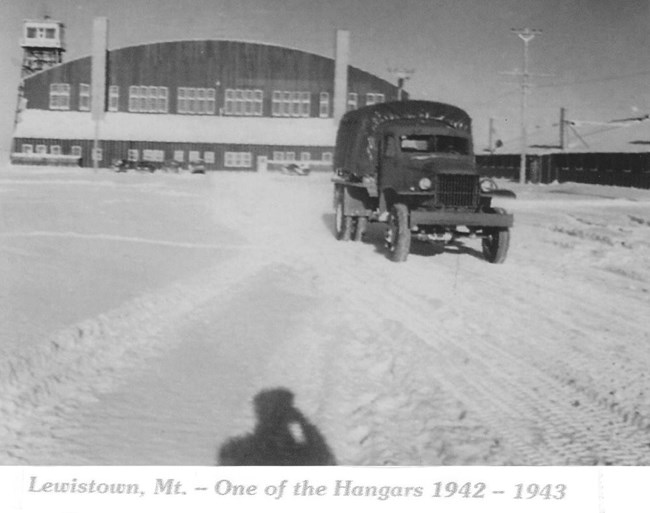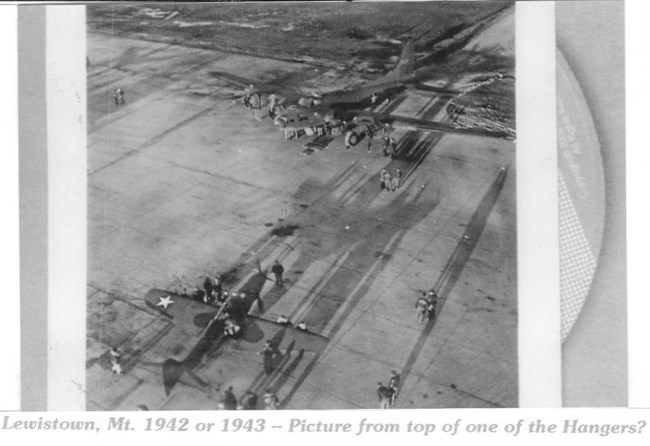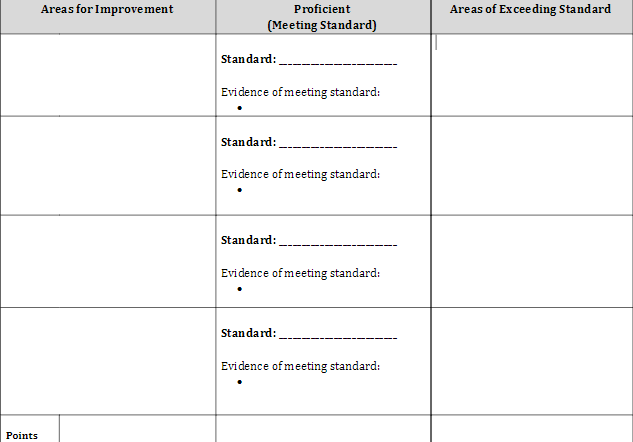Part of a series of articles titled Lewistown, Montana, WWII Heritage City Lessons.
Article
(H)our History Lesson: Lewistown, Montana: Comparing and Connecting WWII Home Front cities

Credit: Lewistown Public Library; Central Montana Historical Photographs
About this Lesson
This lesson is part of a series teaching about the World War II home front, with Lewistown, Montana designated as an American World War II Heritage City. The lesson contains photographs, two readings, optional media activity, and a culminating mastery project. The first reading shares a brief summary of Lewistown’s contributions as a Heritage City, and the second reading connects the region to the designation of a Heritage City. There is a media activity to watch a local news clip highlighting the city’s designation. The culminating project contributes to learners’ understandings of the city as a WWII Heritage City, with the opportunity to combine lesson themes from the three other lessons in the Lewistown lesson collection. This is to summarize the city’s contributions and encourage connections to the overall U.S. home front efforts.
To see more World War II resources, see the Teaching with Historic Places' WWII Page.
Objectives:
In a culminating product:
- Identify important World War II home front locations and organizations in Lewistown, Montana and describe their historical significance
- Explain the significance of the Lewistown Army Airfield in the training of B-17 Flying Fortress crews and Allied Forces successes
- Summarize the contributions and volunteerism of Lewistown civilians
- Describe life on the home front for children and their contributions within Lewistown, Montana
- Optional: Describe similarities and differences of Lewistown and other Heritage city(s) / World War II home front(s).
Materials for Students:
- Photos
- Readings 1, 2 & media activity link
- Maps, project materials (as needed)
- Student graphic organizers (See photo 5 at end of lesson, for reference)
-
Create Comparison Matrices for your students to use. To compare two cities, create a one-page sheet with three columns and four rows. Label the left column Theme/Topic and the other columns City 1 and City 2. For a Comparison Matrix for three cities simply add an additional column.
-
Create two Single-Point Rubrics to assist students’ self-assessment. One is for assessing proficiency in meeting teacher-selected standards. One is for assessing proficiency in meeting objectives.
-
For the rubric on standards, create a one-page sheet with three columns and four rows of content. Label the first column “Areas for Improvement,” the second column, “Proficient (Meeting Standard),” and the third column, “Areas of Exceeding Standard.” Leave the first and third columns blank. In each row of the second column identify a Standard and indicate a space for noting the evidence for meeting the standard. Include a space at the bottom of the page for assigning points for each column.
-
For the rubric on objectives, create a one-page sheet with three columns and four rows of content. Label the first column “Areas for Improving toward Objective,” the second column, “Proficient (Meeting Objective),” and the third column, “Areas of Exceeding Objective.” Leave the first and third columns blank. In the four rows of the second column identify these four objectives:
-
Identify important World War II home front locations and organizations in Lewistown, Montana and describe their historical significance
-
Explain the significance of the Lewistown Army Airfield in the training of B-17 Flying Fortress crews and Allied Forces successes
-
Summarize the contributions and volunteerism of Lewistown civilians
-
Describe life on the home front for children and their contributions within Lewistown, Montana
-
Optional: Describe similarities and differences of Lewistown and other Heritage city(s) / World War II home front(s).
Include a space at the bottom of the page for assigning points for each column. See the last photo of this lesson for reference.

Credit: Lewistown Public Library; Central Montana Historical Photographs
Getting Started: Essential Question
Why was Lewistown chosen as an American World War II Heritage City, and what are its similarities and differences to other home front cities?
Quotation to consider:
“When they very first started, they flew one of the B-17s over Main Street in Lewistown, which didn't take very long, but with the bomb doors open and everything, I can't imagine how excited those people were at that time and how welcoming they must have been to all of our servicemen to come and train . . . The history would have been different. The war would have ended differently and it [Norden bombsight] developing out of something that looks like a small little shack that made such a huge impact; to me is inspiring.”
- Doug Day, member of the Lewistown Historic Preservation Board, quoted in “Lewistown named Montana’s only WWII American Heritage City,” August 18, 2023, Montana Right Now
Read to Connect
Teacher Tip: This summarizes readings from across the other Lewistown lessons. It can be used to summarize or review the learning from the previous lessons.
During World War II, Lewistown, Montana, played a significant role in contributing to the home front war efforts. The most notable contributions were from the establishment of the Lewistown Army Airfield, where service members received training for operating the B-17 Flying Fortress and utilizing the Norden Bombsight. This training proved crucial as many of the military personnel trained here went on to support Allied successes abroad. Nearly 1,000 service members underwent training at the Lewistown Airfield, strengthening the ranks of the Allied Forces. Lewistown also had many local enlistments, with men and women joining the military to serve both stateside and overseas.
Local civilians in Lewistown actively volunteered their time and resources to support the war effort. Women played a vital role by volunteering for the Red Cross, where they contributed to the production of surgical dressings essential for medical care on the front lines. The community rallied together to donate scrap metal for the war effort, participated in war fund campaigns, and engaged in activities such as victory gardens to supplement food supplies. Local civilians trained and volunteered as air wardens, including a unit of mounted air wardens.
Children in Lewistown were also involved in contributing. The local National Youth Administration (NYA) produced air raid shelter blankets for the Red Cross and created agricultural models to support increased food production for defense purposes. Collecting kitchen fats was supported by the Girl Scouts. Children collected copper and other materials in local drives. They participated in victory gardening with their families.
Overall, the collective efforts of the residents of Lewistown exemplified their dedication and commitment to supporting the war effort on the home front during World War II.
Excerpt from: “House Report 115-998, “To Direct the Secretary of the Interior to Annually Designate at Least One City in The United States as An ‘American World War II Heritage City,’ and for other purposes” (October 30, 2018)
“. . .PURPOSE OF THE BILL
The purpose of H.R. 6118 is to direct the Secretary of the Interior to annually designate at least one city in the United States as an ``American World War II Heritage City''.
BACKGROUND AND NEED FOR LEGISLATION
On December 7, 1941, military forces of the Empire of Japan attacked the U.S. Naval Fleet and ground bases at Pearl Harbor in Hawaii. On December 8, 1941, one day after what President Roosevelt referred to as, ``a date which will live in infamy,'' the United States declared war against the Empire of Japan. Three days later, on December 11, 1941, Japan's ally, Germany, declared war on the United States. Sixteen million Americans, mostly young working-age men, served in the military during World War II, out of an overall United States population of 113 million.
While an unprecedented number of Americans served in World War II, the country drastically increased its war production on the home front, serving not only the needs of the armed forces of the United States but her allies as well--in what President Franklin Roosevelt called ``The Arsenal of Democracy.'' The combination of millions serving in the military, during a period of necessary and drastic increases in production, led to significant social changes on the American home front.
The World War II period resulted in the largest number of people migrating within the United States in the history of the country. Individuals and families relocated to industrial centers for good paying jobs out of a sense of patriotic duty. Many industrial centers became ``boomtowns,'' growing at phenomenal rates. One example, the City of Richmond, California, grew from a population of under 24,000 to over 100,000 during the war. . . .”
Questions for Reading 1 and 2, Photos
-
What was the purpose of the bill (H.R. 6118) according to the report?
-
Why do you think Lewistown, Montana was designated as a World War II Heritage City? Connect details from the bill and the first reading.
-
Are there other cities you think of when considering home front contributions during wartime? Which, and why?
Media Activity
Heritage City Local News Coverage
Watch the local news clip (2:54) about Lewistown’s Heritage City designation.
(Date: August 18, 2023, by Nonstop Local, of Central and Western Montana)
Reporter: In the dark days following the bombing of Pearl Harbor, Congress appropriated massive defense appropriations. The US army selected Great Falls as a site for a major air base and then satellite airfields were built in Cut Bank, Glasgow, and Lewistown. That is where we find Joee Taylor who's diving into history as Lewistown gets ready to celebrate being named as Montana's only World War II Heritage City.
Joee Taylor, reporter: While this building might not look like much today, back in World War II it was encircled with barbed wire and kept under 24-hour armed guard as part of the Lewistown Satellite Airfield. Montana provided an ideal landscape for B-17 bomber training crews, so the US focused on the training of B-17 pilots here, as well as training bombardiers on a new piece of equipment - the Norden bombsight. This is how it works: As a bomber is approaching its target, the bombardier can enter the wind direction airspeed and altitude data into the bombsight’s analog computer, and it would calculate wind drift and correctly aim the bomb.
Doug Day, Lewistown Historic Preservation Board Member: The airmen would come to Lewistown and a few other places, but Lewistown was one of the main places from anywhere from a month to three months, and train on how to fly the Flying Fortress , a B-17. . . Crawl into this little bubble underneath it to be a bombardier or a pilot or . . . Those guys are heroes. I can't imagine how brave they were. They'd come to Lewistown and train and then go off to fight in the war.
Taylor: The B-17 was said to have dropped more bombs than any other US aircraft in World War II, and this satellite airfield in Lewistown was only one of four secret training airfields.
Day: A lot of them were taken down because the government won't leave things up for . . . for strategic reasons, but this one in Lewistown still exists, and it's now part of our heritage.
Taylor: Overall, Lewistown was crucial to the success of World War II because of the Norden bombsight.
Day: History would have been different. The war would have ended differently, and developing out of something a small little shack that looks like . . . made such a huge impact . . . to me is inspiring.
Taylor: Now this is the only identifiable Norden bombsight building still standing in the US and you can come check this along with other historic buildings out at the Lewistown airport tomorrow, and you can find those details on our website. I'm Joee Taylor. Nonstop Local.
Reporter: Joee, thank you very much. There will be an event tomorrow honoring this development. It will take place at the Historic Lewistown Satellite Airfield and will feature guest speakers, an ice cream social, and a walking tour. It starts at 2:00 p.m., so if you’re living in or near Lewistown, be sure to check it out if you get the chance.
-
What imagery and details stood out to you in the news clip? How does this connect to the history you have learned about Lewistown?
-
Are there other details you would have included in the news story to describe the home front contributions of Lewistown?

Courtesy of Sarah Nestor Lane
Culminating Activity/Mastery Product
To demonstrate student understanding, support students in creating a final product that meets the following objectives:
- Identify important World War II home front locations and organizations in Lewistown, Montana and describe their historical significance
- Explain the significance of the Lewistown Army Airfield in the training of B-17 Flying Fortress crews and Allied Forces successes
- Summarize the contributions and volunteerism of Lewistown civilians
- Describe life on the home front for children and their contributions within Lewistown, Montana
- Optional: Describe similarities and differences of Lewistown and other Heritage city(s) / World War II home front(s).
Mastery products should be:
. . . student-led; Students work as individuals or in collaborative groups.
. . . student-directed; Students are offered a variety of choices for product type.
. . . student-organized; Teacher facilitates by providing students with the comparison matrices and/or resource links from throughout the series of lessons.
. . . student-assessed; Teacher supports student self-assessment and reflection by providing students single-point rubrics to assess for meeting standards and/or lesson objectives.
Note: Depending on time and scope, the comparison of Lewistown to another WWII Heritage or home front city(s) within the mastery product (objectives) may be omitted. However, comparing cities is recommended, as it connects students to a deeper understanding of the WWII home front.
Examples of mastery product choices include, but are not limited to:
-
Written: Letter (opinion or informative), essay, poem, narratives, biography, articles, class book or children’s book, speech or debate (then presented orally), blog / website, plaque or historical displays, pamphlets or rack cards
-
Graphic Organizers: timeline, flowcharts, mind or concept content maps, Venn diagrams, comparison matrices, posters
-
Artistic Expression: song, dance, theater (ex. skits), 3-D models, dioramas, photo journal, stamp and coin designs, visual art, architecture/building or monument, museum design
-
Media design and creation: podcast, historical markers, social media content, interactive virtual maps or tours, infographics, video, comic strips or graphics, game design, slideshows, digital scrapbook
Please view the American World War II Heritage City Lesson Page for information and resources on other cities.
This lesson was written by Sarah Nestor Lane, an educator and consultant with the Cultural Resources Office of Interpretation and Education, funded by the National Council on Public History's cooperative agreement with the National Park Service.
Last updated: September 18, 2024
